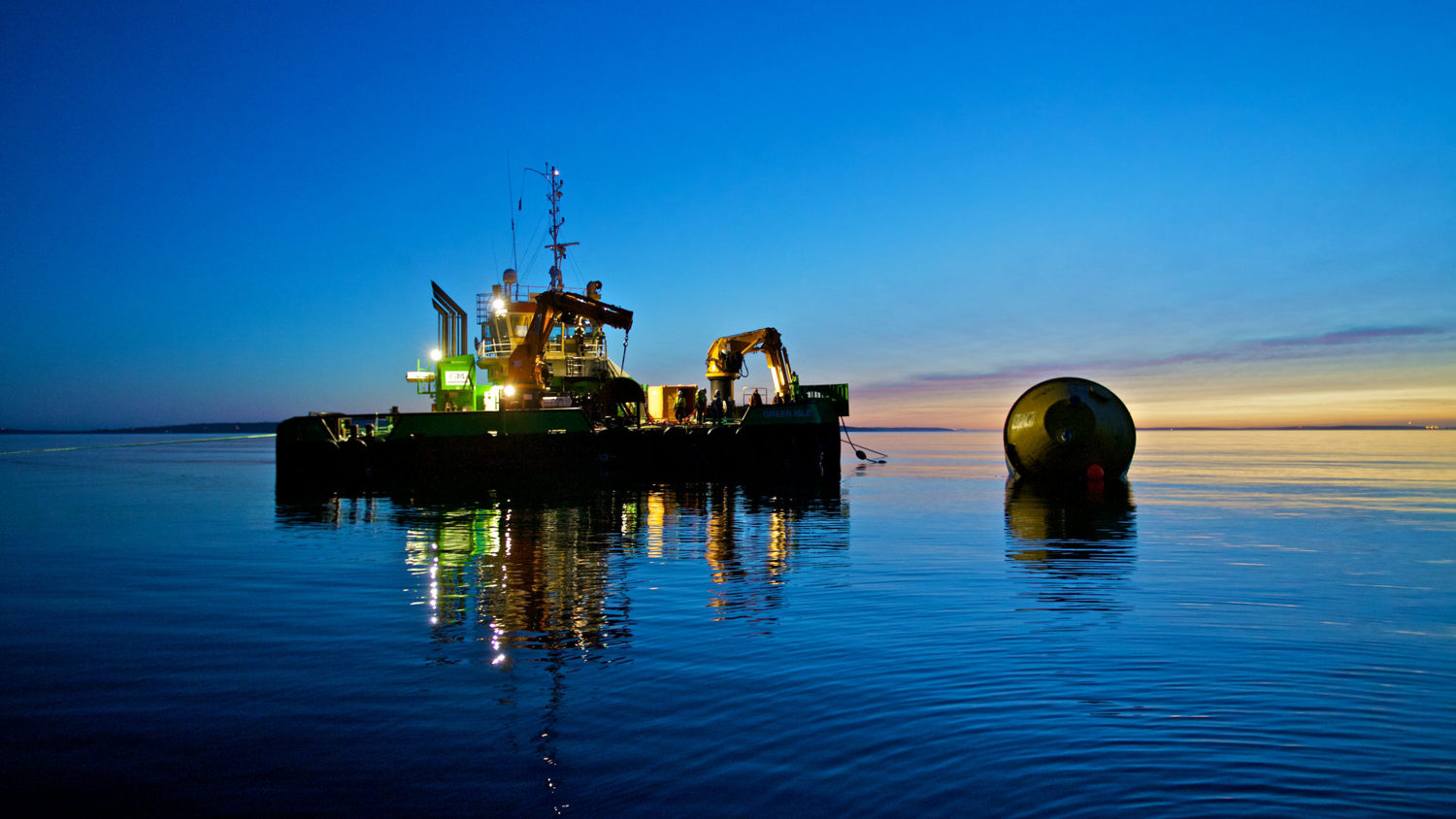
Golden tickets to the ocean energy factory
No, these coupons won’t grant you VIP access to a magical chocolate factory nor to any of Roald Dahl’s novel universes, and yet, by no means, should their golden value be underestimated. Since 2016, the Interreg North-West Europe programme supports a set of projects dedicated to unlocking the potential of marine energy technologies in the region. Over 40 M EUR are being invested in six pioneering initiatives that aim at supporting SMEs whilst tackling challenges for the deployment of technologies and contributing to the European energy transition.
Overcoming risks and costs in marine energy innovation
Despite their strong potential benefits, the costs associated with the demonstration of low TRL (technology readiness level) technologies cannot be neglected. Pre-commercial technologies also come with high risks, which often fail to surpass the famous “valley of death” of innovation. Here, Interreg NWE marine energy test vouchers are making a difference in the sector by supporting SMEs from North-West Europe in bearing this combination of high risks and costs and, as a consequence, promoting innovation and delivering new technologies to the market.
How Interreg voucher schemes drive marine energy innovation
'Interreg voucher schemes help technology developers reach financial close while maintaining a healthy pipeline of promising projects. This win-win approach ensures that as many machines as possible hit the water', says Victor Kempf from Ocean Energy Europe, the largest global network of ocean energy professionals and partner in two Interreg NWE projects.
'Interreg projects are enabling crucial real sea demonstration to help prove technologies and reach commercial roll-out. Marine energy test sites help to alleviate these risks using project voucher schemes', says Nicolas Wallet, coordinator of the FORESEA project at the European Marine Energy Centre.
FORESEA project: Advancing marine energy testing and deployment
One of the projects led by EMEC is called “Funding Ocean Renewable Energy through Strategic European Action” or simply FORESEA. The initiative received over 6.5 M ERDF and provided free access to a world-leading network of marine energy test centres via its voucher scheme. Since its launch, FORESEA has increased real-sea testing activity in the sector, with 30 technologies successfully deployed at North-West Europe test centres with the project’s support.
Impact of FORESEA's floating tidal turbine demonstration
Amongst FORESEA’s set of demo projects is “Orbital’s SR2000” floating tidal turbine, which was deployed at EMEC in October 2016 and tested was until September 2018. During the testing period, SR2000 operated on site continuously and generated over 3 GWh of electricity, supplying on average 7% – with peaks of up to 25% – of the Orkney Islands’ (Scotland) total electricity demand. Also, the installation, maintenance and recovery operations were carried out with small vessels, verifying the economic potential of floating tidal energy at full commercial scale.
'The success of Orbital Marine Power is evidence to the impact FORESEA has played on the sector. The SR1-2000 2MW floating tidal turbine proved to be one of the key players in harnessing tidal energy in recent years. Orbital Marine Power aims to continue to prove their concept with the Orbital O2 device currently in construction as they branch out to commercialisation', Nicolas continues.
Recognition of FORESEA and the future of OceanDEMO
The project efforts were widely recognised in 2019. FORESEA was among the runner-ups of the EU Sustainable Energy Innovation Award and was granted with the follow-up project “Demonstration Programme for Ocean Energy Pilot Farms and Supporting Technologies” (OceanDEMO). After the identification of key market failures relating to the first multi-device ocean energy farms by its predecessor, OceanDEMO will address these via three key elements: demonstrating technologies, developing a supply chain and supporting the creation of an enabling policy environment for marine energy. At this stage, the project has already organised three calls for free access to its testing sites with over 20 projects in the pipeline.
